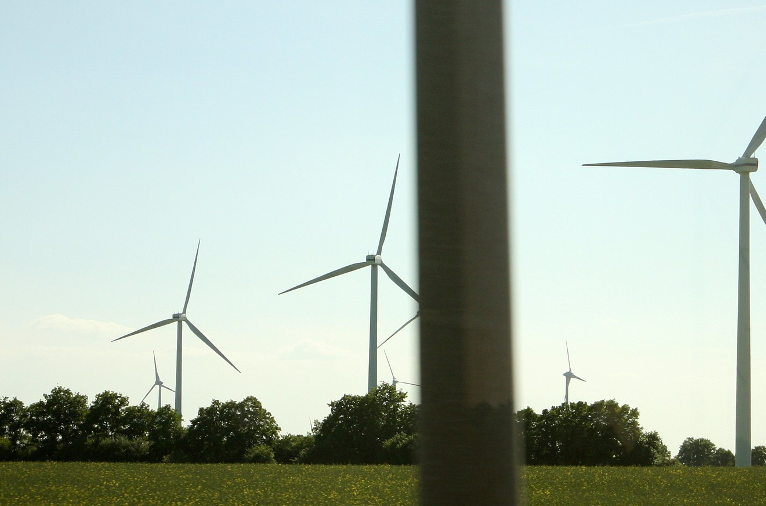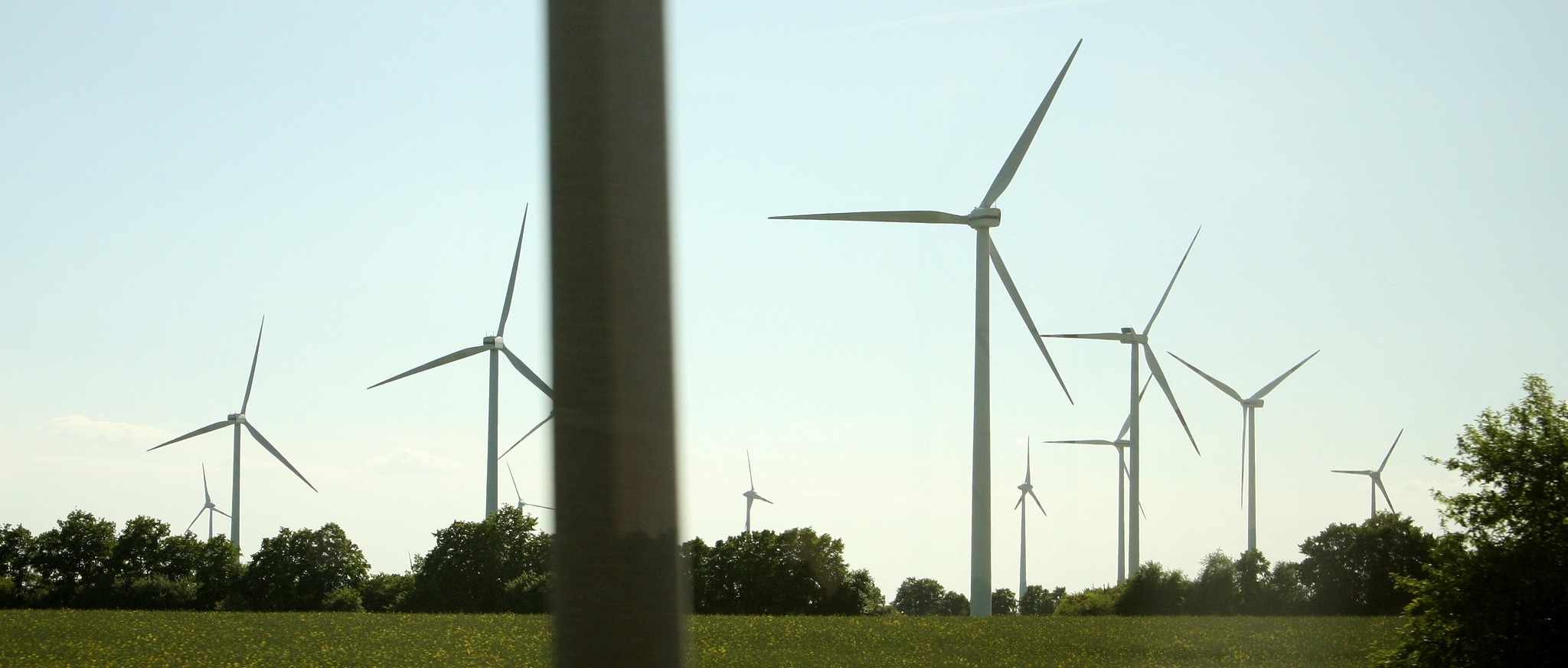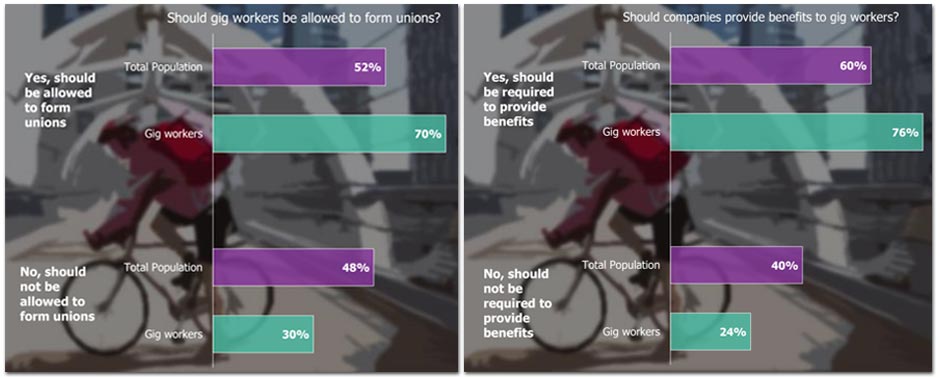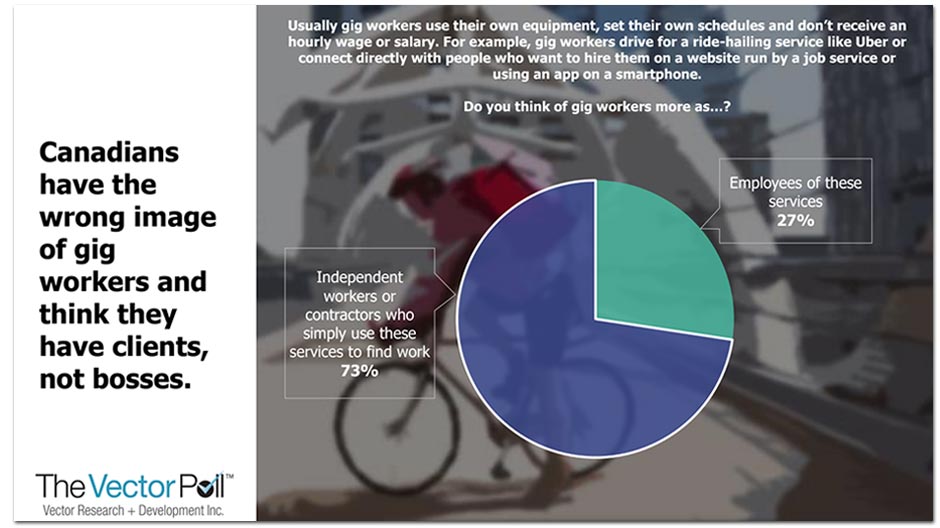
Youth climate activists have been striking to demand immediate climate action from political powers. They conjoined the issues of climate and labor by calling for a global climate strike in September, 2019, in which a historic 7.6 million schoolkids, (grand)parents and workers from 185 countries participated. Over 70 trade unions around the world supported the strike and the number of climate groups that are demanding a just transition for fossil fuel workers are also steadily increasing.
The European landscape of climate activism is becoming densely populated. Numerous communities are defending nature together with their livelihoods. Initiatives like Ende Gelände practice civil disobedience to mobilize large numbers of European activists for climate justice. In most recent manifestations, such as Fridays for Future and Extinction Rebellion, many pupils and students are active, who also brought their families and teachers onto the streets.
Some, like the Shell Must Fall alliance, are more explicitly tying corporate power to the climate crisis that has long been destroying communities and the biosphere, particularly in the Global South. Or take the overlap between climate activists and the Gilets Jaunes protesters; who successfully mobilized hundreds of thousands of lower and middle-class folks across France to fight Macron’s so called carbon taxes, following an extractivist logic in favor of the rich and paid for by the poor. The message: climate action must have economic justice at its heart.
Last year, the progressive alliance for a Green New Deal for Europe started turning these demands for climate justice into radical policy proposals. Within months the European Commission (EC) endorsed a European Green Deal, which is supposed to re-evaluate EU’s policies in light of the climate and ecological emergency. However, the EC’s focus on economic growth has proven to prioritize private profits (i.e. privatization) over social and environmental concerns. Due to the COVID-19 outbreak, some calls for a Green New Deal are now being reformulated to the need for a green and just economic recovery from the pandemic.
Recovery responses by the European Union and member states remains to be seen. But what is clear is that any future policy will have to achieve a just and democratic energy transition. To do this, we need to address the fact that market competition and big business have been blocking the efforts of (local) authorities and communities that drive the energy transition. By reclaiming energy grids and services, and creating democratic public ownership models citizens and cities have been able to take climate actions that put people and planet first.
For the labor and climate justice movements to win anything close to a just recovery and a Green New Deal, we need to collectively stand up against market solutions and build on the diverse forms of energy democracy that are already being developed across Europe.
FAILING MARKET SOLUTIONS
The first half of 2019 was the worst for clean energy spending in six years, with investments dropping globally. There has been a slowdown in the shift to renewable electricity across the EU since 2014, with annual investments in renewables reducing by 50 percent between 2011 and 2017. The European Commission warned its member states that their energy and climate plans are unlikely to meet the EU 2030 targets for renewable energy and energy efficiency. Half of EU countries will probably not even meet their 2020 target for renewables.
As Trade Unions for Energy Democracy (TUED) explains in much more detail, leaving renewable energy to the market implies that small energy companies have to compete with the big multinationals for subsidies and delivering supply. This approach has failed to bring the necessary investments. Ever since 1996 the EC has been pushing for energy liberalization. The promise was that this would increase competition. However, by 2009 only five big energy companies were dominating the European market.
This market approach is not only leaving many Europeans in energy poverty, it also has also failed to deliver an energy transition on the scale and with the speed that is needed. For the last two decades, it was not competition but public policy and state aid, often in the form of Feed-in-Tariffs (FiTs), that drove the growth of solar and wind electricity. FiTs are fixed remunerations that are paid to renewable energy producers for each unit of energy produced and injected into the electricity grid. This caused renewable energy prices to drop while people’s energy bills have been increasing, as it was users — lower income users in particular — that paid for these subsidies. In Italy, for example, 85 percent of the FiTs’ benefits went to large producers and Italian users had to foot the bill. Or take the Netherlands, where the vast majority of public resources spent on climate and energy policy goes to corporations. Only one fourth of the money benefits households, of which higher income ones receive as much as 80 percent.Because of the initial growth of solar and wind renewables, many European governments became convinced that the energy transition was no longer dependent on subsidies and decided to partially or completely revoke their FiT schemes. However, without state subsidies and with lower prices for renewables, markets do not deliver the high returns that private investors are looking for. Moreover, across Europe FiTs have been replaced by competitive bidding, further benefiting the large and established companies. As a result, smaller energy cooperatives have had to close down in Denmark and Germany, which shows where current policies could lead us. Generally, investments in renewables in European countries continue to plummet.
In the meantime, Europe’s civil society has been doing a whole lot of advocacy to push the EC to acknowledge the rights of citizens and cooperatives in its Clean Energy Package. But as the EC continues to put all its faith in market rule and competition, it reduces EU citizens to their market value. The package requires EU countries to implement legislation that protects the right of citizens and so-called energy communities to produce, sell and store their own energy. Although this may benefit the more affluent European citizenry, these “market rights” turn users into market players which have to compete with each other while being outcompeted by the energy incumbents. Labor and climate justice movements need to jointly push back against market ideology so that our policies no longer treat the climate and energy transition as a class privilege but rather as a human right.
DEMOCRATIC PUBLIC OWNERSHIP
To kick-start the energy transition, let alone a just one, we must stop wasting time and public funding on the private and incumbent companies seeking guaranteed profits. Instead, we must take the whole energy sector out of the market and into democratic public ownership. From South Africa to the United States, campaigns that aim to prevent or reverse energy privatizations and build or transform public enterprises in an equitable and ecological fashion are in full swing. This is because energy privatizations — as well as Public Private Partnerships and outsourcing models — have led to worsening labor conditions, massive price hikes and a dire lack of investments.
In South Africa, a coalition consisting of trade unions and civil society organizations are fighting to save and transform the electricity multinational ESKOM. The government wants to break up and sell off its generation, transmission and distribution sections. Because this notorious World Bank policy of “unbundling” is known for ushering in private companies, the international coalition is proposing to build a new ESKOM that is “fully public and serving the people” in order to develop its renewable potential in ways that create jobs and improve everyone’s life quality.
In his Green New Deal proposal, former US presidential candidate Bernie Sanders called for realizing full public ownership over renewable energy and the entire power system by favoring “public power districts and municipally- and cooperatively-owned utilities.” This declaration is on the one hand a response to the horrific Californian wildfires caused by the negligence of the American investor-owned utility Pacific Gas & Electric (PG&E). On the other hand, this response builds on the growing number of citizen campaigns — from San Francisco and Lancester to Hermiston and Minnesota — that successfully pushed their local authorities to provide publicly owned electricity from renewable sources. Popular pressure from across US cities and counties have been a precondition for Sanders to put country-wide public ownership of electricity on the agenda.
European civil society can learn from the South African and US campaigns as we face similar bottlenecks. Firstly, it points us to the necessary strategy of proposing pathways to transform Europe’s corporatized state-owned electricity companies — such as EDF (France), RWE and E.ON (Germany), Iberdrola (Spain), ENEL (Italy) and Vattenfall (Sweden) — into democratic public entities as they currently behave, domestically and internationally, like predatory multinationals. Secondly, it shows that the localized and country-wide demands for publicly owned energy systems should not oppose but strengthen each other. Thirdly, Sander’s proposal shows that social movements can effectively put public energy ownership at the center of the Green New Deal, which is promising as this is exactly what the Green New Deal for Europe coalition has been doing by calling for public investment and ownership across energy generation, transmission, distribution, management and conservation.
It is clear that we need to develop encompassing proposals for carefully planned energy transitions that are country and continent-wide. But for these to be endorsed by politicians and policy makers, grassroots organizing is essential. This will only reach a tipping point when residents are experiencing the benefits that the many forms of public ownership can bring. Turning back energy privatizations and setting up your own municipally-owned energy company — in other words, (re)municipalization — is a key strategy for building more just local economies and democratizing our energy systems.
In 2017, the Transnational Institute reported in Reclaiming Public Services that since the start of the 21st century, 311 energy services and infrastructures have either been reclaimed (189) or newly built (122). By 2019, the figure of reported (re)municipalizations has risen to an impressive 374. Remunicipalizations are popular across the political spectrum because in the long-term public ownership tends to be more affordable for both local authorities and residents than privatizations. Private providers are usually more expensive because of high fees that consultants and lawyers charge to design the contracts; the profits and dividends that have to be paid to shareholders; and the interest fees that tend to be higher for private companies.
To show the variety of municipal energy ownership models, and ways in which it can deepen democracy, let us zoom in on towns and cities in Germany, the United Kingdom and Spain, as they have been developing essential pro-public expertise to tackle the climate crisis.
GERMANY: PARTICIPATE IN ENERGY GOVERNANCE
 Windmills in eastern Germany. Photo by Till Westermayer / Flickr
Windmills in eastern Germany. Photo by Till Westermayer / Flickr
The German energy transition was enabled by an alliance between the Social Democrats and the Green Party, introducing FiTs in 2000. But the Big Four energy companies failed to shift to renewable energy by adjusting the grids for decentralized generation. This coincided with many grid concession contracts that were expiring in the previous two decades. The anti-nuclear and renewable energy movements pushed hundreds of municipalities to reclaim the grids and create their own local supply company. Exemplary remunicipalizations have happened in Wolfhagen and Hamburg.In Wolfhagen, as the contract with private operator E.ON expired and after three years of tough negotiations, the municipal council managed to remunicipalize its electricity grid in 2006. The impact has been extraordinary. The yearly profit brought prices down, started funding the local kindergarten and led to a near doubling of the number of staff. Then, after a fierce public debate about the need to go 100 percent renewable, the town did not have to turn to big private investors. Residents were able to organize themselves and set up a citizen cooperative in order to raise the millions needed to pay for the wind turbines. This public-citizen partnership led to improved local economic democracy as the cooperative became the owner of a quarter of the assets of the municipal energy company and now has two seats on its board.
The Hamburg government created the public energy supplier Hamburg Energie but was not willing to remunicipalize the energy infrastructure. Activists in the city then successfully organized a referendum in 2013 to reclaim the city’s electricity, gas and heating grids. By 2016, the city completely bought back the electricity grid, and in the first year of the remunicipalization this already saved €34.5 million. It also created the Energy Advisory Board, as part of the public energy agency, with 20 local representatives from the social, science, industry and business sectors. Their meetings are open to the public, giving citizens the opportunity to ask questions and submit proposals. In 2018 the gas and heating grids were also reclaimed.
UK: NEW PUBLIC ENERGY ENTERPRISES
One in every ten citizens of the UK is facing energy poverty, with thousands of people dying because of underheated homes every winter. In recent years, citizen mobilizations have led to the creation of a public energy company in Nottingham and a community benefit organization in Plymouth. Their purpose is to offer more affordable tariffs, providing energy efficiency services and supporting renewable energy generation.
Plymouth Energy Community (PEC), a member-owned energy organization, was created in 2013 with the support of the City Council. The city provided a grant, loans and staff expertise so that the organization could strengthen local capacities to “create a fair, affordable, low-carbon energy system with local people at its heart.” In 2014, PEC Renewables was launched, which funds, installs and manages local renewable energy generation schemes. By 2019, PEC supported more than 20,000 households to save over £1 million on their energy bills, while clearing over £26,000 of small debts. PEC has also built a solar farm on a plot of contaminated land, which combined with the rooftop panels on schools and community buildings, has enabled the city to produce enough clean electricity to supply 2,000 homes. Revenue, that is expected to reach up to £1.5 million and will be reinvested in carbon and energy poverty reduction projects.
Robin Hood Energy is a municipal energy supplier — and Living Wage employer — in Nottingham, where it was created in 2015 to fight energy poverty and take on the Big Six energy companies with its transparent pricing and its ban of private shareholders and director bonuses. By now, they are partnering with nine other UK cities to offer certified green energy at reduced tariffs to households across the country. The supplier provides energy to 130,000 users, has 200 employees and already made a saving of £200,000 pounds, which it is fully reinvesting in more affordable and renewable energy services.
However, for these municipal and community-owned companies to succeed and not outcompete each other, the whole energy system needs to be reclaimed. Last year, the UK Labour Party published a report that called for the creation of a National Energy Agency. This agency would own the transmission lines and be in charge of planning and setting decarbonization targets. Regional authorities would own distribution grids. Municipalities and communities would be able to locally produce renewable energy and supply residents. This scaled and integrated approach would be able to serve the entire territory, on the basis of collaboration instead of competition.
SPAIN: CITIES AND CITIZENS JOIN FORCES
In 2015, Spanish citizen’s platforms, building on the 15M movement in which millions of residents occupied cities’ squares and brought progressive “municipalist” candidates to power. With 15 percent of the population living in energy poverty and electricity prices increased by 83 percent since 2013, fighting the private power system and building energy democracy is a key priority for these municipalist city councils.
The solutions that are being developed range from setting up new municipal electricity companies (Barcelona, Pamplona and Palma de Mallorca), involving residents in writing more just energy policies (Cádiz ) and getting united in the Spanish Platform for a New Energy Model, in which municipalists can exchange lessons and best practices. Numerous cities are now also contracting renewable energy cooperatives, such as GioEner and Som Energia, with some municipalities agreeing to pay the electricity bills for the poor families in their area.
Moreover, the Network for Energy Sovereignty developed 19 policy recommendations for Spanish municipalities to more systematically engage citizens in energy decision-making. For example, they propose ways so that women, in particular single mothers who are hardest affected by the fossil fuel model, can lead the climate and energy transition towards an ecofeminist economy.
In 2018, the governing citizen platform Barcelona en Comú created the new energy retail company Barcelona Energia to buy energy directly from renewable sources. In 2019, the municipality created a participatory council that is open to users and citizens’ groups and authorized to submit proposals on the strategic direction of the company, give input on issues, such as tariffs and investments, and help shape education policies. The city launched a “solar” tariff to promote self-sufficiency and an “efficiency” tariff, based on the level of energy use. The new public company is supplying the municipal buildings and can serve 20,000 households.
Once in power, the municipalists of Cádiz created two permanent citizen working groups: one to fight energy poverty and the other, to achieve the energy transition. The latter pushed the city administration to generate solar power and switch entirely towards renewable electricity. The former organized residents who face energy poverty to co-design a social discount program, which would guarantee electricity access to over 2,000 families in need by reducing bills by up to 80 percent. Moreover, due to improved communication between the city council and the semi-public electricity company, 55 percent of the company’s revenues are now being reinvested to cover the costs of municipal energy use and pay for the social discount. This has prevented disconnection for thousands of homes every year.
KILL THE ENERGY CHARTER TREATY
Corporate power will continue to fuel the climate crisis, especially since many big energy companies still have the Energy Charter Treaty (ECT) on their side. The ECT is the world’s biggest international agreement, curtailing the democratic powers of more than 50 countries. The treaty’s investment protection mechanism — also known as Investor-State Dispute Settlement — enables powerful energy companies to sue countries for outrageously high sums of money. For example, three foreign investors have used this mechanism to pressure Bulgaria to pay hundreds of millions of dollars for decisions that would limit their profits and combat energy poverty. Moreover, the German multinational Uniper recently announced to sue the Netherlands for almost 900 million euro under the ECT for its decision to phase out coal-fired power plants. It is crystal clear that the ECT provides corporations with the power to halt the energy transition.
Given the persisting powers of fossil fuel companies, it should not come as a surprise that in 2018, global carbon emissions hit a record high, use of fossil fuels grew with the demand for gas, oil and coal all increasing, and the energy demand was growing at its fastest pace this decade. In the meantime, the pandemic has resulted in a drop in greenhouse gas emissions, but this impact will only be marginal if governments are not effectively pressured into a green and just recovery.













 Windmills in eastern Germany. Photo by
Windmills in eastern Germany. Photo by 


